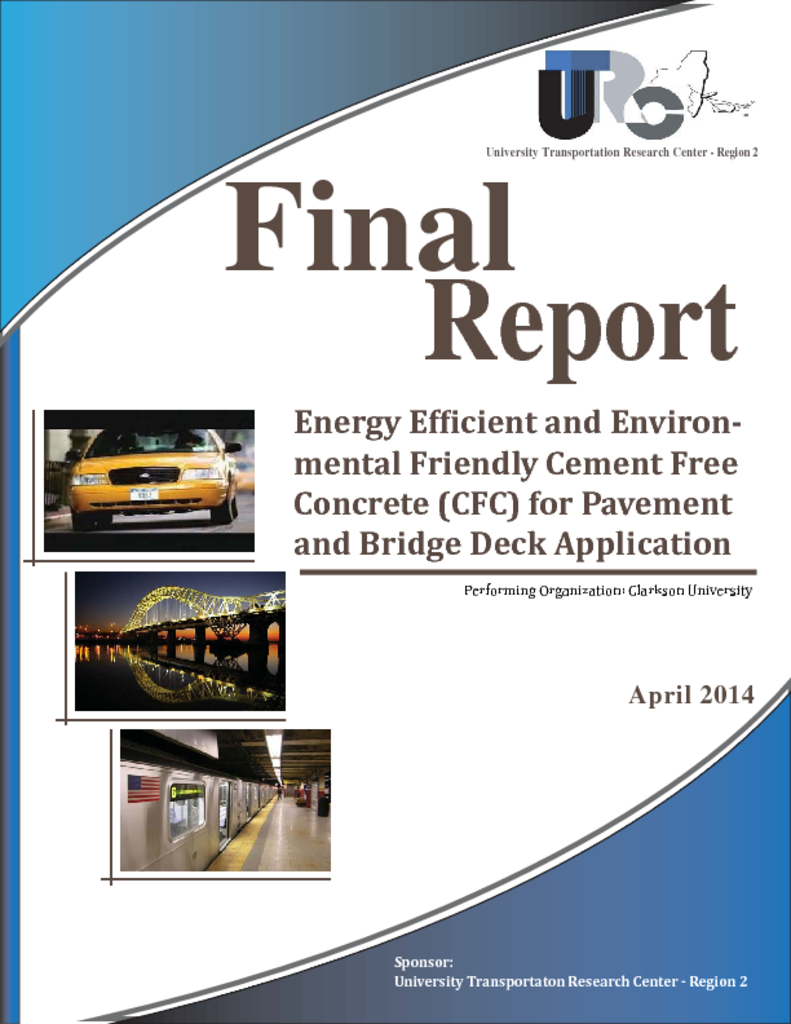A comprehensive study was performed to develop energy efficient and environmentally friendly alkali-activated cement-free concrete mixtures for pavement and bridge deck applications using sodium silicate-activated fly ash and slag as the sole binders. The effects of water content, air entrainment, alkali concentration, and curing temperature and duration on the resulting compressive strength and workability were evaluated. From these data, four mixtures were selected that showed potential for application in transportation infrastructure. Three sodium silicateactivated slag mixtures and one sodium silicate-activated fly ash mixture were selected based on compressive strength, with a target range of 30-40 MPa, and with adequate workability. The selected mixtures were evaluated in detail to determine their applicability in terms of mechanical performance and long-term durability. To quantify mechanical performance, the compressive strength, tensile strength, elastic modulus, and Poisson’s ratio were determined for the selected mixtures at both ambient and elevated temperature curing conditions. It was shown that the tensile strength of all mixtures was about 21% of the compressive strength, the elastic modulus was approximately 600 times the compressive strength, and the Poisson’s ratio was most nearly 0.12. The current relationships for ordinary portland cement (OPC) concrete underestimate the tensile strength and overestimate the elastic modulus. The typical Poisson’s ratio for OPC concrete is 0.18, about 50% higher than in alkali-activated concrete. The evaluated durability properties included the chloride penetrability, a measure of the potential for corrosion of steel reinforcement, alkali-silica reaction (ASR) potential, a measure of the susceptibility to deleterious expansion due to reactions between alkaline and siliceous materials within the concrete, and drying shrinkage, an indication of the susceptibility of concrete to shrinkage and cracking caused by removal of pore water. Results indicated high chloride penetrability for all mixtures, although this was likely an artifact of the test method. No trends were discernible with regard to ASR, since identical mixtures tested under two different methods gave conflicting results. Additionally, high-magnitude drying shrinkage was observed in the proposed mixtures when cured at ambient temperature. Drying shrinkage was drastically reduced in heat-cured specimens, but this was likely due to the loss of water during the heat curing process. Overall, the mixtures proposed cannot be put into practical use until the durability properties are investigated further. Additional methods of permeability measurement need to be employed, and further research into ASR must be performed. Additionally, it is necessary to investigate means of reducing the shrinkage of these mixtures prior to implementation.


